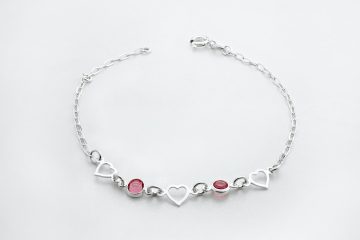Bracelets are a timeless accessory that has been adorning wrists for centuries. From delicate gold chains to bold beaded designs, bracelets come in various styles, materials, and price ranges, making them a popular choice for both personal use and gifting. If you’re considering selling bracelets, whether through an online platform or a physical store, there are several essential factors you need to consider to ensure success. In this comprehensive guide, we will explore these factors and provide valuable insights to help you navigate the world of bracelet sales.
1. Understanding Your Target Audience
Before diving into the world of bracelet sales, it’s crucial to have a clear understanding of your target audience. Who are you selling to? Are your bracelets designed for men, women, or both? What age group are you targeting? By determining your target audience, you can tailor your marketing strategies, product selection, and pricing to meet their specific needs and preferences.
It’s also important to consider the style preferences of your target audience. Are they more inclined towards minimalistic designs or do they prefer statement pieces? Are they interested in trendy fashion bracelets or classic, timeless options? Conducting market research and analyzing current trends can help you gain valuable insights into the preferences of your potential customers.
2. Quality and Materials
The quality and materials of your bracelets play a vital role in determining their appeal and value. Customers expect their bracelets to be durable, comfortable to wear, and made from high-quality materials. Depending on your target audience and their preferences, you may choose to offer bracelets made from different materials, such as gold, silver, stainless steel, leather, or beads.
When selecting materials, consider factors such as hypoallergenic properties, resistance to tarnish or fading, and the overall aesthetic appeal. Offering a variety of materials can cater to different customer preferences and price ranges, allowing you to reach a wider audience.
3. Design and Style
Bracelets are a fashion statement, and the design and style of your offerings can greatly influence their appeal. Stay up-to-date with current fashion trends and keep an eye on what influencers and celebrities are wearing. This can provide inspiration for designing bracelets that align with the latest fashion movements.
Consider offering a range of styles to accommodate different tastes. Some customers might prefer delicate and minimalist designs, while others may seek bold and eye-catching pieces. By diversifying your design options, you can attract a broader customer base and increase the chances of making a sale.
4. Pricing Strategy
Establishing an effective pricing strategy is crucial when selling bracelets. You need to find a balance between profitability and competitiveness in the market. Conduct market research to understand the price ranges of similar bracelets offered by your competitors. This will help you position your products appropriately in terms of pricing.
Consider the cost of materials, manufacturing, and any additional expenses such as packaging and marketing. It’s important to factor in these costs while ensuring your pricing is attractive to customers. Offering occasional discounts or promotions can also help drive sales and create a sense of urgency.
5. Branding and Packaging
Creating a strong brand identity is essential for standing out in a competitive market. Choose a name that reflects your brand’s values and resonates with your target audience. Develop a visually appealing logo and design a cohesive brand identity that can be applied across your website, social media platforms, and packaging.
Packaging plays a crucial role in creating a memorable unboxing experience for your customers. Consider investing in high-quality packaging materials that align with your brand’s aesthetics. A well-designed and thoughtful package can leave a lasting impression, increasing the chances of customers recommending your bracelets to others.
6. Online Presence and E-Commerce Platforms
In today’s digital age, having a strong online presence is vital for any business. Create an engaging and user-friendly website where customers can browse and purchase your bracelets. Optimize your website for search engines to improve your organic reach. Utilize social media platforms to showcase your products, engage with your audience, and drive traffic to your website.
Consider selling your bracelets on popular e-commerce platforms such as Amazon, Etsy, or eBay. These platforms have established customer bases and can provide valuable exposure for your brand. However, be sure to research the platform’s fees, policies, and competition before making a decision.
7. Marketing and Advertising
To generate sales and increase brand awareness, effective marketing and advertising strategies are crucial. Identify the most effective channels to reach your target audience and allocate a budget accordingly. Consider utilizing social media advertising, influencer collaborations, email marketing, and search engine optimization (SEO) techniques to maximize your reach.
Engage with your audience through compelling content and storytelling. Highlight the unique features of your bracelets and communicate the emotions and experiences they can provide. Incorporate user-generated content and testimonials to build trust and credibility among potential customers.
8. Customer Service and Satisfaction
Providing excellent customer service is paramount in building a successful bracelet-selling business. Ensure prompt and friendly responses to customer inquiries and concerns. Offer a hassle-free return policy and address any issues promptly and professionally.
Customer satisfaction should be your top priority. Encourage customers to leave reviews and feedback, and use this information to improve your products and services. A positive customer experience can lead to repeat purchases and valuable word-of-mouth recommendations.
9. Building Relationships and Partnerships
Collaborating with other businesses, influencers, or charities can help expand your reach and build valuable relationships. Partner with complementary brands to cross-promote each other’s products. Collaborate with influencers or bloggers who align with your brand’s values to showcase your bracelets to their followers.
Consider supporting charitable causes by donating a portion of your profits or creating limited-edition bracelets for specific campaigns. This not only allows you to give back to the community but also creates a positive image for your brand.
10. Monitoring and Adaptation
The business landscape is constantly evolving, so it’s crucial to monitor trends, customer feedback, and market changes. Stay updated with the latest fashion movements, emerging materials, and evolving customer preferences. Continuously analyze your sales data and adjust your strategies accordingly.
Regularly review your pricing, product selection, and marketing efforts to ensure they align with your customers’ needs and desires. Adaptation is key to staying ahead of the competition and maintaining a successful bracelet-selling business.
Conclusion
Selling bracelets can be an exciting and rewarding venture. By understanding your target audience, offering high-quality products, implementing effective marketing strategies, and providing excellent customer service, you can build a successful business in the world of bracelet sales. Remember to stay adaptable and continuously monitor market trends to ensure your offerings remain relevant and appealing to your customers.
FAQs
1. How do I determine the right target audience for my bracelet business?
Understanding your target audience requires market research and analysis. Consider factors such as age, gender, style preferences, and purchasing power. Look at existing customer data and conduct surveys or interviews to gain insights into their needs and preferences.
2. What materials are popular for bracelets?
The choice of materials depends on your target audience and their preferences. Gold, silver, stainless steel, leather, and beads are all popular options. Consider factors like durability, hypoallergenic properties, and aesthetic appeal when selecting materials.
3. How can I differentiate my bracelet brand from competitors?
To stand out from the competition, focus on creating a unique brand identity. Develop a strong visual presence, offer innovative designs, and provide exceptional customer service. Find your brand’s unique selling proposition (USP) and emphasize it in your marketing efforts.
4. What are some effective marketing strategies for selling bracelets?
Social media advertising, influencer collaborations, email marketing, and search engine optimization (SEO) are all effective marketing strategies. Engage with your audience through compelling content and storytelling, and leverage user-generated content and testimonials to build trust.
5. How can I adapt to changing market trends in the bracelet industry?
Regularly monitor market trends, analyze customer feedback, and stay updated with the latest fashion movements. Review your pricing, product selection, and marketing efforts regularly to ensure they align with your customers’ desires. Stay adaptable and be willing to adjust your strategies as needed.




